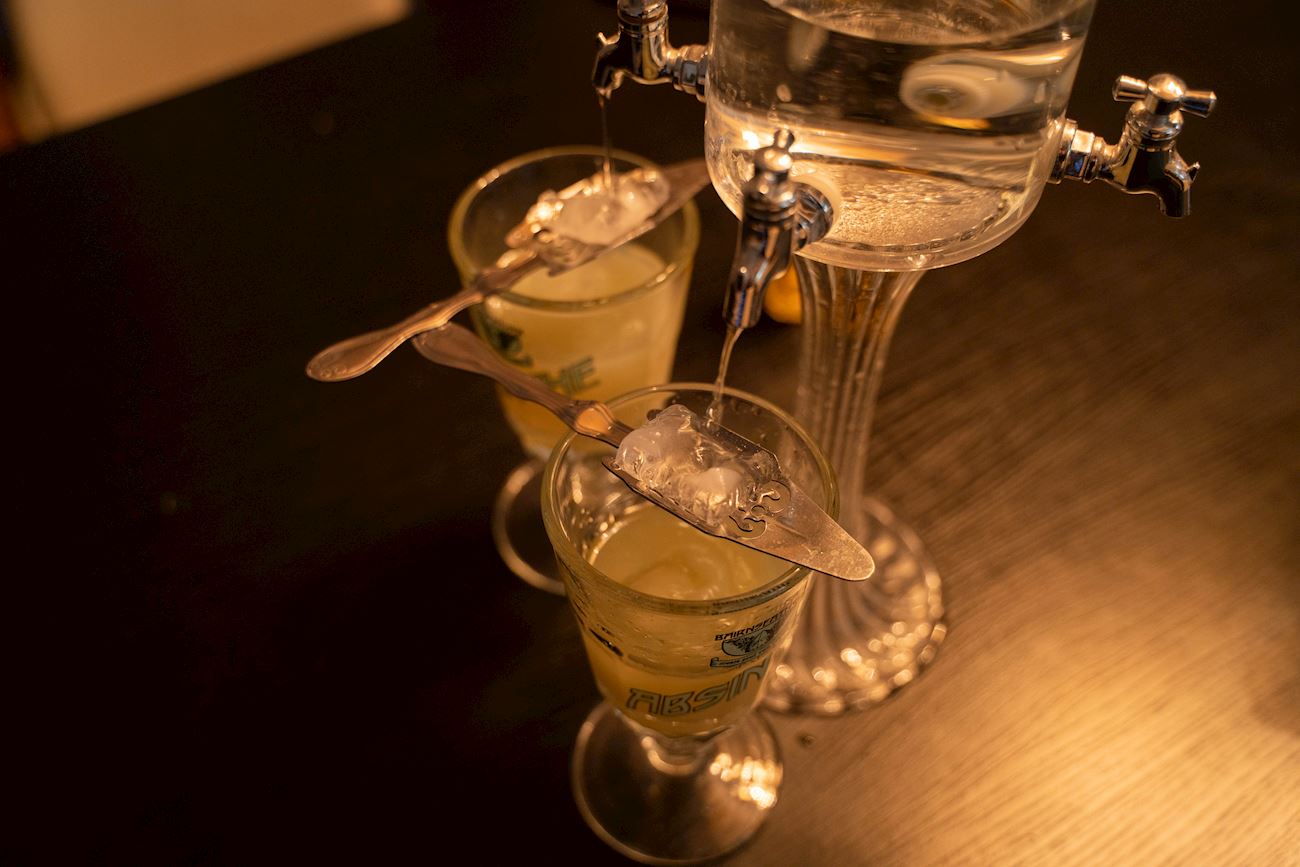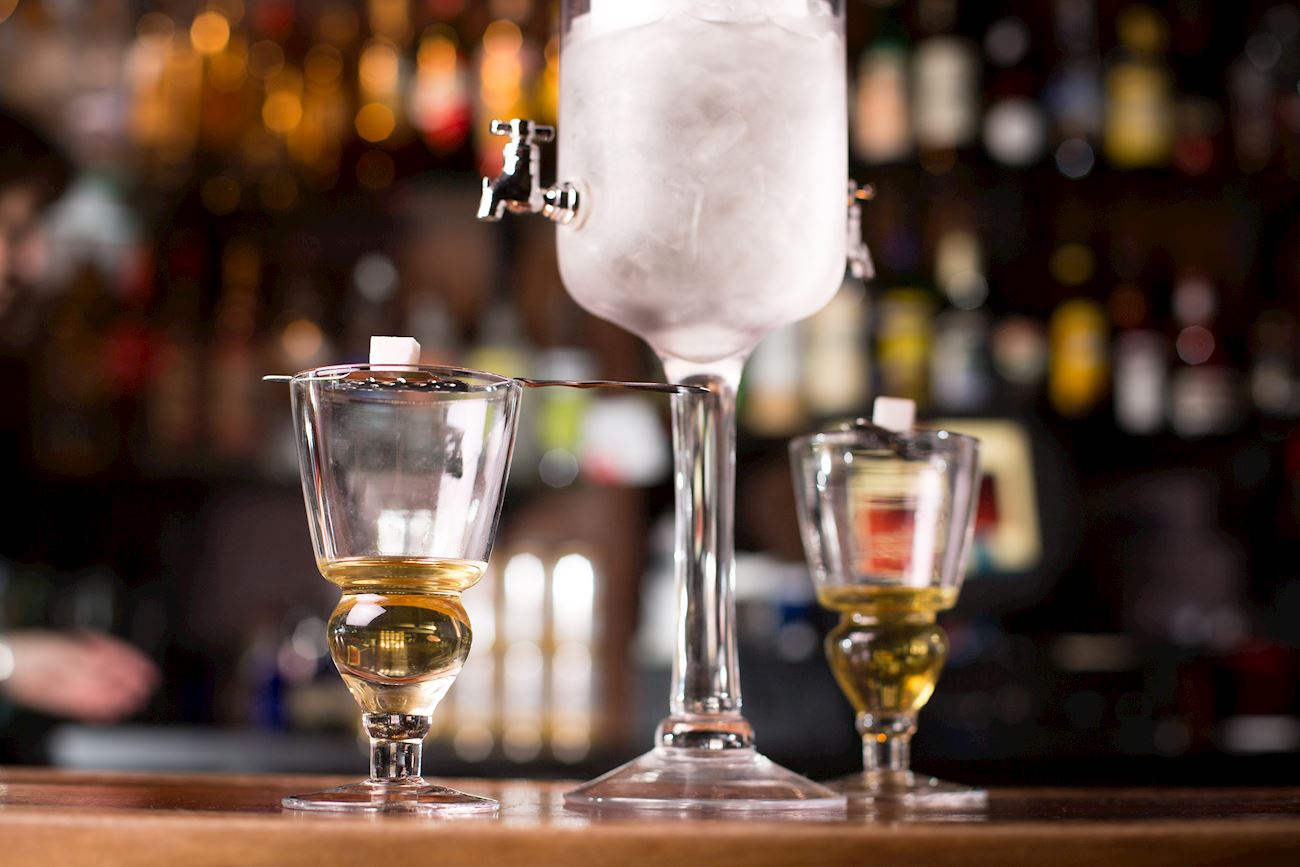Absinthe
This alcoholic beverage is produced with a base of a neutral spirit that is infused with a blend of botanicals, primarily the leaves of Artemisia absinthium, an ancient medicinal plant that is also known as wormwood or simply absinthe.
Other flavorings usually include different combinations of anise, fennel, melissa, coriander, or other botanicals. The result is a clear spirit often called white or blanche absinthe. Green or verte absinthe is made with maceration of plants, while some, usually low-quality versions, can be artificially dyed.
Although a doctor Pierre Ordinaire is often credited as the inventor of absinthe, the truth is that the plant has been used for centuries before the alleged Ordinaire’s creation. Absinthe or absinthe-based beverages were primarily enjoyed as health tonics, and it was only in the 1800s that it started to be perceived as an alcoholic beverage. Read more
The drink rose to fame when it became a popular choice among the French bourgeoisie. The popularity of absinthe coincided with the phylloxera, a disease that destroyed most of the vineyards in Europe. Although wine was still preferred choice among the Europeans, the popularity of absinthe was a heavy blow to the wine industry.
It was then that the alleged marketing campaigns against absinthe, which were supposedly fueled by winemakers, started to appear. Absinthe was portrayed as a hallucinogenic spirit that led people to madness and violence. At the beginning of the 20th century, it was first banned in Switzerland, and then in the rest of Europe.
The true reason behind the ban was thujone, a chemical compound found in wormwood. Although thujon is a toxic substance, the amount present in absinthe cannot cause hallucinations, but it does have psychoactive effects. Because of that, it is considered that genuine absinthe must have thujons.
Otherwise, it can be classified as an aromatized drink similar to absinthe. It was only in the 1990s that the regulations have changed, allowing for revival in production and easier distribution of absinthe. Today, the biggest absinthe producers come from France, Germany, Switzerland, and the Czech Republic.
High-quality absinthe is light and herbaceous, and it is best served in a glass over which ice-cold water is slowly dripped. Often, a perforated spoon is put on the glass and topped with ice or a sugar cube. The novel technique of burning the sugar cube and allowing it to melt is not the traditional way absinthe is consumed.
Best Absinthe





